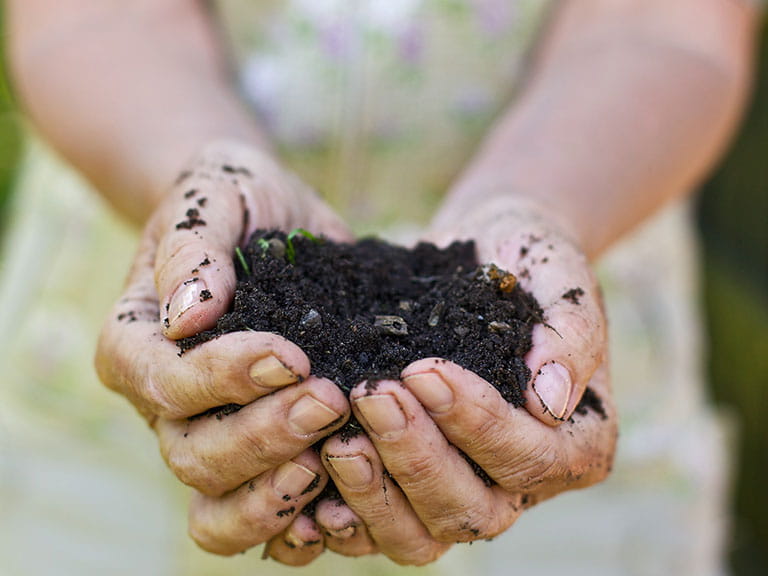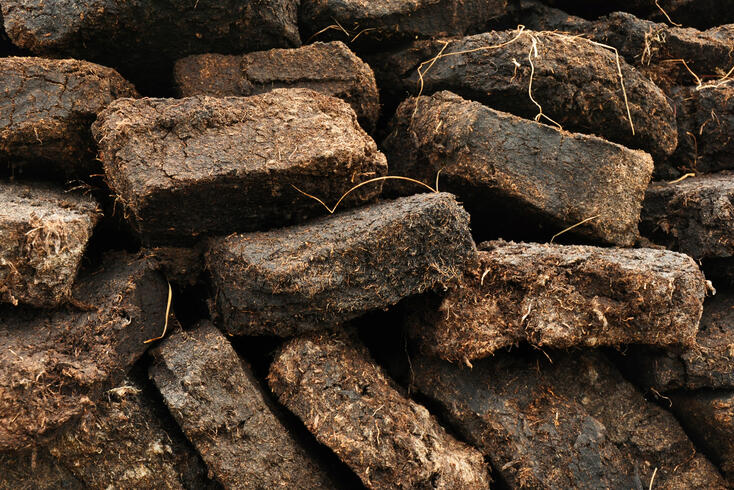The disadvantages of peat-free compost are:
1) The lack of nutrients in the soil when compared to peat-containing compost; 2) The lack of water retention in the soil when compared to peat-containing compost; and 3) The inability for the plant’s roots to grow into the soil because there are no large clumps of earth present and its lower nutrition value.
Peat-free compost is a new trend in the industry. It is a type of compost that does not include any peat moss. The main disadvantage of this compost is that it does not have the same nutrients as traditional compost because it lacks peat moss content.
Some people believe that this type of compost has fewer nutrients, which may reduce its quality. This can be solved by adding other types of organic material to the mix, such as manure and kitchen scraps.
Contents
Is peat necessary in potting soil?
In a typical potting soil, peat is the main ingredient. The raised bog peat used is acidic. By means of lime, the pH value can be adjusted to the needs of the plant. Peat can store a lot of water and remains stable in its structure. It contains hardly any nutrients, so these are often added to the soil. Since peat consists largely of organic matter, it ensures that fixed humus accumulates in the soil.
For which plants is peat good?
Peat is most beneficial to those plants that need a highly acidic soil, i.e. a low pH. These are hydrangeas, rhododendrons and especially blueberries. But there are other, more environmentally friendly ways to make the soil more acidic besides peat.
However, peat is essential for growing, seeding and pricking out. This is because alternatives bring higher salinity, too many nutrients or a coarser structure, which delicate seedlings can not tolerate.

What are the Disadvantages of Peat-Free Compost?
Peat-free compost is the most commonly used type of compost in the United States. It is used by most commercial and residential gardeners.
Peat-free compost has a lot of advantages, such as being processed without using peat moss and having less odor than traditional compost. However, there are some disadvantages as well, such as needing more space to store it and not being able to use it on plants that need peat moss for their growth.
Peat-free compost also has been known to have a lower nutrient content when compared to traditional compost.
Peat-free compost is a compost that has been processed without peat moss, which is a type of moss that is used to improve soil quality.
Peat-free compost can be made from organic materials such as leaves, straw, sawdust and manure. It can also be made from non-organic materials such as paper, cardboard and plastic.
What is Peat-Free Compost?
What is peat?
Simply put, peat is a special type of soil that is formed in bogs. It consists of incompletely decomposed plant remains. There are several varieties, which differ in their properties:
Raised bog peat: This is the peat used for our plant soil. The plant remains from the raised bog are relatively weakly decomposed, the peat is low in nutrients as well as strongly acidic. Its pH value is approximately between 3 and 4.5. There are two variants of raised bog peat: black peat and white peat. The latter comes from the upper layers of the bog and represents the first stage of decomposition. White peat is actually rather light brown, can store a particularly large amount of water, loosens the garden soil and has a pH value between 3 and 4. Black peat, on the other hand, lies much deeper in the bog, is somewhat less acidic, finer and plant remains are hardly recognizable. It takes several thousand years to form.
Lowland peat: It is rich in nutrients, already highly decomposed and can be both acidic and alkaline. The pH value is between 3.2 and 7.5. Lowland peat is not used for plant soil.
Peat-free compost is a type of compost that does not use peat moss as the main material. It consists of a mixture of materials such as sawdust, straw, wood chips, and other organic materials.
Peat-free compost is becoming more popular because it has many benefits over traditional compost. It uses less water to create, less space to store, and it is environmentally friendly.
Peat-free compost can be used in gardens or even on your lawn to improve the quality of soil and reduce water usage.

Disadvantages of Peat-Free Compost
Peat-free compost is a popular alternative for gardeners. However, it is not as effective as peat in terms of nutrient retention. It is also more expensive to use and can cause health problems if used incorrectly.
Peat-free compost has been around for a while now, but it has its disadvantages. For example, it can be difficult to get the right amount of water in the soil without peat, and it can be difficult to find the right balance between nutrients and moisture levels.
There are some disadvantages of peat-free compost. For one, it may not have the same nutrients as peat-based compost. Another disadvantage is that it may not be effective in attracting worms and insects.
Peat-free compost has many benefits over the traditional compost, though. It doesn’t smell or attract pests like worms and insects. It also has a lower carbon footprint because it uses less energy to create than traditional composting methods.
Peat-free compost is better for plants because it doesn’t have the high levels of ammonia that traditional compost has, which can harm plants’ roots and leaves.
Peat-free compost is losing popularity due to its disadvantages. It can cause problems with the environment, such as the release of greenhouse gases and acidification of soil.
Peat-free compost is a compost that contains no peat, which is a type of soil that accumulates on top of wetland plants and preserves them. Peat-free compost is also known as “compost tea” because it is made by steeping organic waste in water for about 24 hours before it is applied to plants.
Peat-free compost has some advantages over traditional compost, but it has some disadvantages too. For example, peat-free compost doesn’t have the same ability to retain moisture and nutrients in the soil like traditional compost does. This means that gardeners will need to
Alternatives to Peat-Free Compost
Alternatives to peat
To make the soil more acidic without peat, there are several options: If the soil is loose, organic alternatives such as compost from oak leaves or even needle soil from the forest are good choices. For dense clay soils, you can replace peat with sulfur, for example (apply the previous year). You can find out what the actual pH of your soil is and how it changes with pH test strips.
Peat-free soil: common ingredients at a glance.
Peat-free soil is usually a mix of substitutes that complement each other’s effects to replace peat. These are the most important:
Xylitol: The precursor to lignite has so far proven to be a promising peat alternative in research. Like peat, xylitol has a very low pH, does not steal nutrients from plants, does not decompose and provides good soil aeration. Xylitol can store less water than peat, but this can be remedied with additives. A study by the Research Institute for Horticulture in Weihenstephan showed that with soil containing xylitol, balcony plants do extremely well in terms of growth, flowering and health. But here’s the catch: Instead of plundering bogs, open-cast mining of fossil lignite is needed for xylitol. Only if existing xylitol stocks from surface mining are used would xylitol be more environmentally friendly than peat.
Compost: It is richer in nutrients than peat and improves soil quality in the long term, but unlike peat it is not suitable as a main ingredient for garden soil. This was the conclusion reached by researchers at the University of Budapest using compost soils. In their three-year study, peppers showed signs of deficiency and the harvest was smaller.
Bark humus: It can store water as well as nutrients and gradually release them to the plant.
Wood fiber: This ingredient makes the soil loose and well aerated. Shortcomings of wood fibers are that they can store less water than peat and bind nitrogen.
Coconut fibers: They provide a loose soil and are structurally stable. However, coconut fibers bind nitrogen, making frequent fertilization necessary. They also dry out quickly, which can tempt you to water even though the root ball may still be moist. Environmental friendliness is also a problem due to long transport distances.
What should I bear in mind when using peat-free soil?
When watering plants in peat-free soil, you literally need a sure instinct, as it can store less liquid and dries out quickly on the surface while the root balls are still moist. Always test how moist the soil is with your finger below the surface before watering so you don’t drown your plant without realizing it. Since peat-free soil binds more nitrogen than peat soil, regular fertilizing is important. For perennial container and houseplants, it is recommended to add clay granules to the peat-free soil. It makes them more stable and can store nutrients and water well.
Peat-free compost can be made from many different materials including coconut fiber, hay, sawdust, wood chips and composted manure.
Peat-free compost is a popular alternative to peat-based products. It is a more environmentally friendly and cost effective option.
There are alternatives to peat-free compost, but they are not as cheap. They are also not as environmentally friendly and have some drawbacks such as higher carbon emissions and lower water retention capabilities.
Peat free compost has some advantages over other types of compost, such as the ability to retain nutrients and water better than other types of compost.

